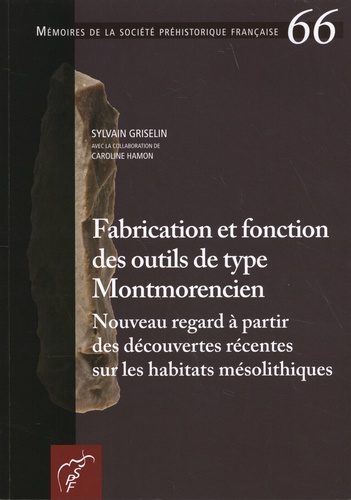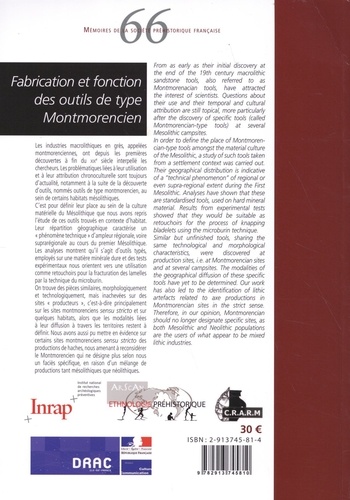En cours de chargement...
Les industries macrolithiques en grès, appelées montmorenciennes, ont depuis les premières découvertes à fin du XIXe siècle interpellé les chercheurs. Les problématiques liées à leur utilisation et à leur attribution chronoculturelle sont toujours d'actualité, notamment à la suite de la découverte d'outils, nommés outils de type montmorencien, au sein de certains habitats mésolithiques. C'est pour définir leur place au sein de la culture matérielle du Mésolithique que nous avons repris l'étude de ces outils trouvés en contexte d'habitat.
Leur répartition géographique caractérise un "phénomène technique" d'ampleur régionale, voire suprarégionale au cours du premier Mésolithique. Les analyses montrent qu'il s'agit d'outils typés, employés sur une matière minérale dure et des tests expérimentaux nous orientent vers une utilisation comme retouchoirs pour la fracturation des lamelles par la technique du microburin. On trouve des pièces similaires, morphologiquement et technologiquement, mais inachevées sur des sites "producteurs", c'est-à-dire principalement sur les sites montmorenciens sensu stricto et sur quelques habitats, alors que les modalités liées à leur diffusion à travers les territoires restent à définir.
Nous avons aussi pu mettre en évidence sur certains sites montmorenciens sensu stricto des productions de haches, nous amenant à reconsidérer le Montmorencien qui ne désigne plus selon nous un faciès spécifique, en raison d'un mélange de productions tant mésolithiques que néolithiques. // From as early as their initial discovery at the end of the 19th century macrolithic sandstone tools, also referred to as Montmorenacian tools, have attracted the interest of scientists.
Questions about their use and their temporal and cultural attribution are still topical, more particularly after the discovery of specific tools (called Montmorencian-type tools) at several Mesolithic campsites. In order to define the place of Montmorencian-type tools amongst the material culture of the Mesolithic, a study of such tools taken from a settlement context was carried out their geographical distribution is indicative of a "technical phenomenon" of regional or even supra-regional extent during the First Mesolithic.
Analyses have shown that these are standardised tools, used on hard mineral material. Results from experimental tests showed that they would be suitable as retouchoirs for the process of knapping bladelets using the microburin technique. Similar but unfinished tools, sharing the same technological and morphological characteristics, were discovered at production sites, i.e. at Montmorencian sites and at several campsites.
The modalities of the geographical diffusion of these specific tools have yet to be determined. Our work has also led to the identification of lithic artefacts related to axe productions in Montmorencian sites in the strict sense. Therefore, in our opinion, Montmorencian should no longer designate specific sites, as both Mesolithic and Neolithic populations are the users of what appear to be mixed lithic industries.



